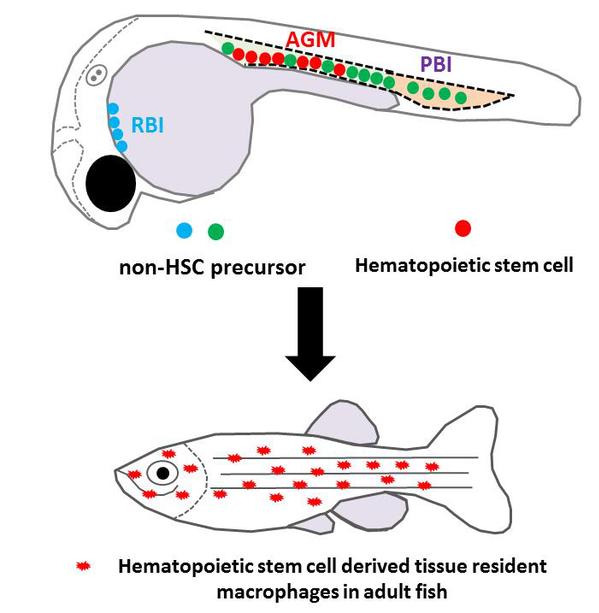Tissue-resident macrophages including Langerhans cells (LCs), the skin epidermis-resident macrophages, are believed to primarily originate from erythro-myeloid progenitors (EMPs) but not HSCs. With the help of a self-built, high-temporospatial-resolution lineage tracing system, Professor Jin Xu’s lab, Professor Wenqing Zhang’s lab and Professor Zilong Wen’s lab discovered that adult Tissue-resident macrophages were primarily derived from HSCs instead of EMPs in adult zebrafish. This report challenged the current view of the LC origin and opened a new window for lineage tracing studies of LCs
This work entitled “Adult zebrafish Langerhans cells arise from hematopoietic stem/progenitor cells” was reported in Elife (https://elifesciences.org/articles/36131. 2018, 15;7.),Professors Jin Xu and Wenqing Zhang from the Division of Cell, Developmental and Integrative Biology, School of Medicine are co-corresponding authors.
Tissue-resident macrophages are one of the key Immune cell types in tissues. They are believed to arise from HSCs. However, current lineage tracing of tissue-resident macrophages largely relies on the promoter-Cre-LoxP system, which often gives rise to contradictory conclusions with different promoters. Using a laser-mediated temporal-spatial resolved cell labeling method, it was demonstrated that most adult LCs in zebrafish originated from the ventral wall of the dorsal aorta (VDA), an equivalent to the mouse aorta, gonads, and mesonephros (AGM), where both hematopoietic stem cells (HSCs) and non-HSC progenitors are generated. Further fine-fate mapping analysis revealed that the appearance of LCs in adult zebrafish was correlated with the development of HSCs, but not T cell progenitors. Finally, it was shown that the appearance of tissue-resident macrophages in the brain, liver, heart, and gut of adult zebrafish was also correlated with HSCs. Taken together, the results of this study challenged the EMP-origin theory for tissue-resident macrophages.


